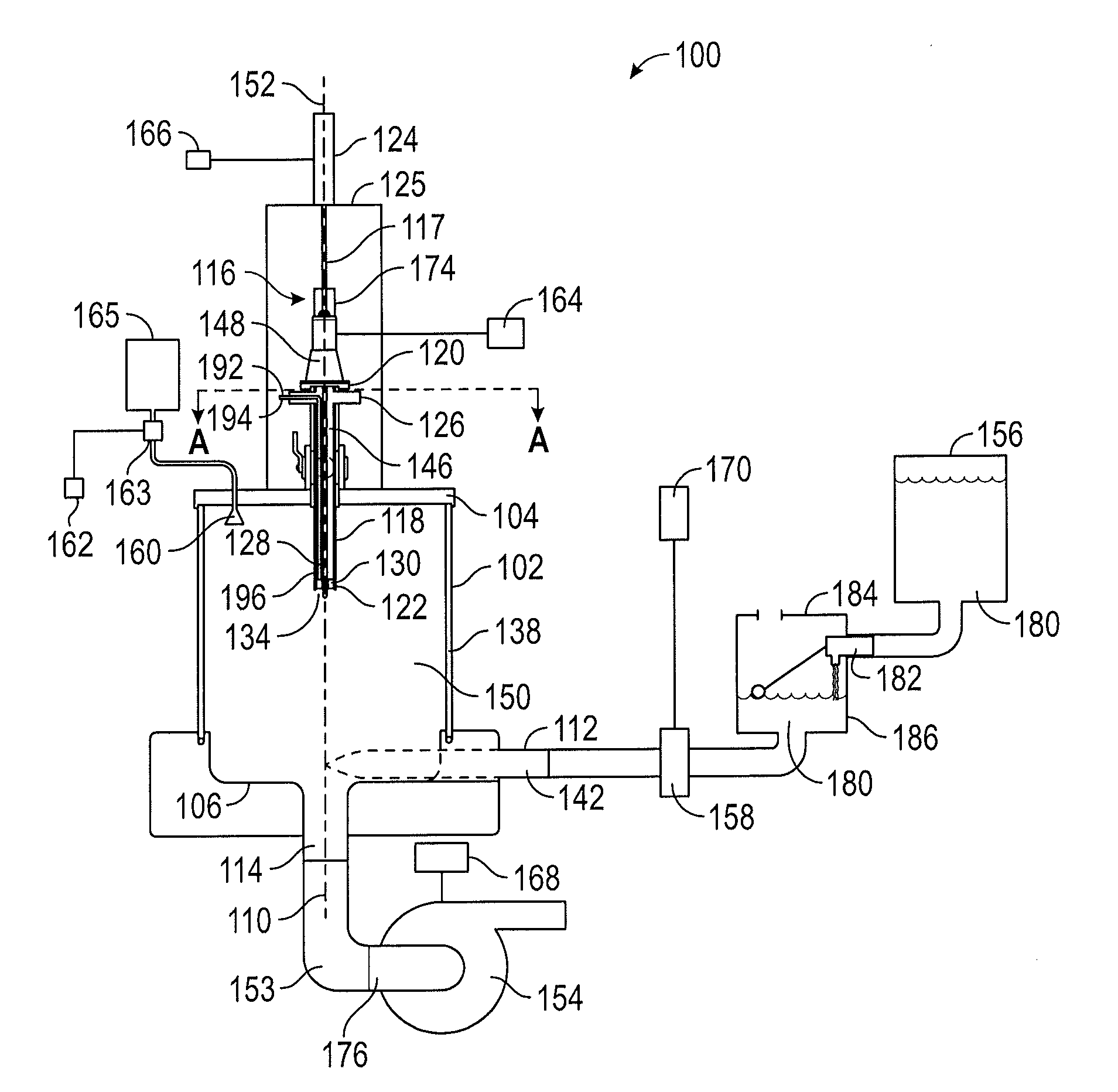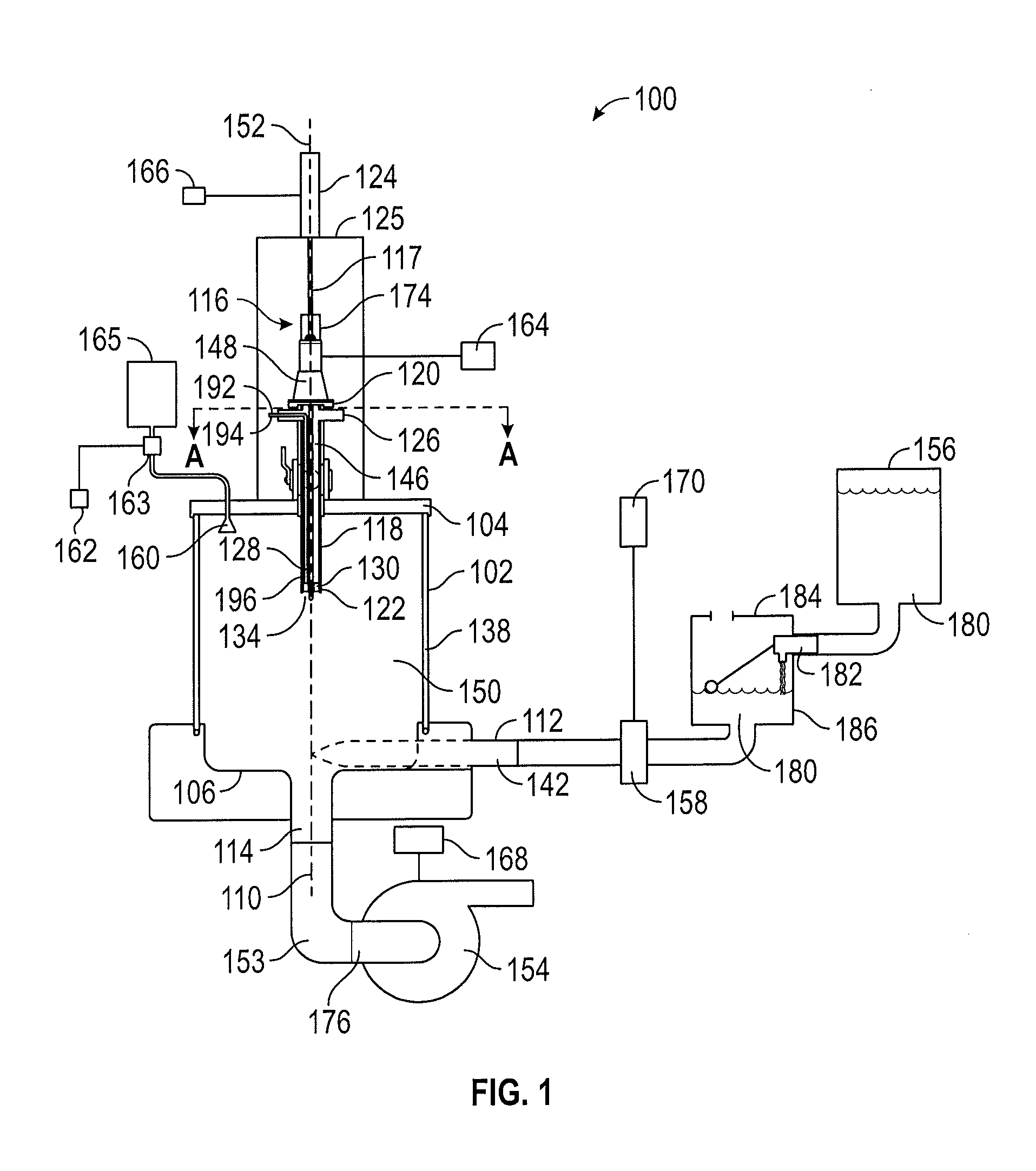Apparatus for mixing and blending of an additive material into a fluid and method
a technology of additive materials and apparatus, which is applied in the direction of non-electric variable control, process and machine control, instruments, etc., can solve the problems of additives being subject to contamination, difficult to convey to the blending device, and prior art that does not effectively address each of the myriad of handling problems
- Summary
- Abstract
- Description
- Claims
- Application Information
AI Technical Summary
Benefits of technology
Problems solved by technology
Method used
Image
Examples
Embodiment Construction
[0020]Referring now to FIG. 1, a side view of an embodiment of an apparatus 100 for mixing and blending of an additive material 190 into a fluid 180 is illustrated in a deployed or second position. The apparatus includes a vertically-oriented cylindrical mixing container 102 and an additive supply unit 116, together with a linear actuator 124 coupled to the additive supply unit 116, an outlet line 153 in communication with the cylindrical mixing container 102, and a fluid supply 156, which may be a container, in communication, via a pressure controller 184 and a restricting valve 158, with the cylindrical mixing container. The additive 190 may be a liquid or solid and may be a combination of additives. The fluid 180 from the fluid supply 156 is preferably provided to the cylindrical mixing container 102 at a predetermined or adjusting pressure by a pressure controller 184, which may be accomplished by maintaining a level of the fluid 180 in a pressure controller tank 186 at a consta...
PUM
| Property | Measurement | Unit |
|---|---|---|
| pressure | aaaaa | aaaaa |
| vacuum | aaaaa | aaaaa |
| physical characteristics | aaaaa | aaaaa |
Abstract
Description
Claims
Application Information
 Login to View More
Login to View More - R&D
- Intellectual Property
- Life Sciences
- Materials
- Tech Scout
- Unparalleled Data Quality
- Higher Quality Content
- 60% Fewer Hallucinations
Browse by: Latest US Patents, China's latest patents, Technical Efficacy Thesaurus, Application Domain, Technology Topic, Popular Technical Reports.
© 2025 PatSnap. All rights reserved.Legal|Privacy policy|Modern Slavery Act Transparency Statement|Sitemap|About US| Contact US: help@patsnap.com



